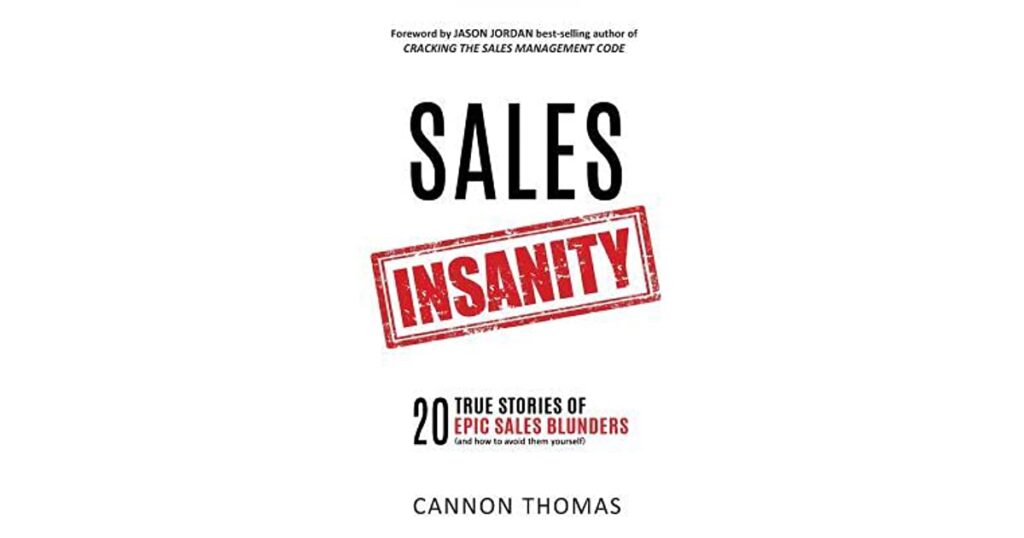For salespeople, encountering objections is a part of life. As prospects proceed through their buying process, it’s inevitable that they will encounter information that will give them pause.
They will stop to question whether they should proceed with the purchase or abort the mission. In other words, they will object. Sometimes the objections are totally legitimate, and sometimes they’re completely absurd, but salespeople have to resolve them nonetheless. Otherwise, a promising sale will come to a screeching halt.
‘Objection handling’ is therefore a topic that is commonly found in sales training programs. The more prepared salespeople are to handle objections, the more comfortably and confidently they can discharge them. This training will often describe the most frequent objections that sellers can expect to encounter and then provide them with thoughtful responses to appease the buyers’ concerns. For instance:
Common Objection: Your price is way higher than your competitor’s.
Thoughtful Response: Yes, I’ve heard that from other customers as well, but once they saw the richness of our features, they totally understood how our product is superior to the competitor’s and why the marginally higher cost is justified by a greater return on investment.
Objection-handling skills are very important and useful, but some of the supposed wisdom that gets dispensed on the topic is laughable. One of my favourites is: ‘It is a great sign when customers raise objections, because it shows that they’re interested.’ Umm … maybe. I think when customers raise objections, it shows that they don’t like something about the salesperson or the product. A much better sign is when they don’t object at all. That means that the salesperson and the product are both doing their jobs.
Another classic gem is: ‘The best way to handle an objection is just to ignore it, because the buyer will either forget they raised it, or they’ll answer the objection themselves in their mind.’ Umm … no. If your buyer raises an objection and you don’t address it, it’s not going away—it’s just going unresolved. It will resurface later in the sales cycle and sink your chances of winning the deal, while you excitedly update your sales forecast to reflect the smooth sales call you just conducted. I sometimes try to ignore the weeds that grow in my lawn, but they never seem to go away. Instead, they tend to grow bigger despite my proactive neglect.
And this leads me to my all-time favorite insane approach to ‘handling’ objections. In fact, it is the exact opposite of the ‘ignore it’ strategy. This one states: ‘Address all possible objections before your customer has the chance to raise them.’ Then your customer’s mind will be carefree, and those pesky objections won’t interfere with the rest of your sale. Yeah, right.

The Worst Practice
Management consultants are frequently asked to ‘shadow’ salespeople in the field. In other words, you follow the sellers around and observe them in their natural environment, hoping to gain some insight into their skills or behaviours. It was during one of these shadowing exercises that I first encountered the dubious strategy of frontloading a sales call with all potential objections.
I was riding around with a well-regarded salesperson for a software company. On this particular day, he had an important meeting with a prospect that he’d been pursuing for several months. The meeting was with a team of mid-level managers who had been chosen to evaluate solution providers and narrow the field to two options for their executive team to then interview. Therefore, this was a critical point in the sales cycle—if the salesperson messed up this meeting, he would be knocked out of contention.
The seller and I were discussing his plan for the meeting over breakfast that morning:
Me: So, do you mind sharing with me your agenda for today’s big sales call?
Seller: Sure. I’ll open the meeting with introductions, since I haven’t met a few of the people who will be in the room. I’ll introduce myself and then ask them to introduce themselves, telling me what they’d like to accomplish during our time together.
Me: Sounds good.
Seller: Then I’ll take five or ten minutes to address several objections that they’ll have.
Me: What objections? You will have done only the introductions at this point in the meeting. What kind of objections could they possibly raise to introductions?
Seller: No, no, no. Of course they won’t have raised any objections at that point, but I always like to go ahead and address the objections that I know they’re going to have.
Me: So, you’re going to raise their objections for them?
Seller: Sure. People always have the same objections, so I just handle them up front. That way we can get them out of the way, and they don’t sit there with the objections festering in their minds. You know, kill the monster while it’s small. That way it doesn’t grow into something you can’t defeat.
Me [willing to learn something new]: Okay. Let’s see how it goes.
True to his plan, the salesperson opened the meeting with a round of introductions and wrote the attendees’ goals for the meeting on a flip chart. He then launched his pre-emptive strike.
Seller: So I thought I would begin by addressing some of the concerns that you probably have regarding our company and our products.
The buyers cocked their heads slightly to the side as they looked at the salesperson standing in front of them. Clearly this was not the agenda item that they were expecting to hear immediately after the introductions.
Seller: Many people are concerned about the small size of our company relative to our much larger competitors. In fact, this will be an advantage to you if we earn your business, because we will assign a senior team to you that will be much more capable, attentive, and responsive than our competitors can provide you.
I noted a few nods around the table. Perhaps this was actually a good strategy?
Seller: You might also find that the pricing I’m going to show you toward the end of the meeting will be higher than you expect. You should know that we offer a superior product that commands a premium in the marketplace. This too should be comforting to you, because you will be purchasing the absolute best-in-class solution.
I’m pretty sure I observed shock on the face of at least one attendee. They surely didn’t see that one coming so early in the conversation.
Seller: And a few customers have told me that they found stories online questioning the security of our technology. I can assure you that our technology is as secure as any of our competition’s. In fact, I’d be happy to put you in touch with several of our current customers who have extensively tested our product and will attest to its bullet-proof security protocols.

At least two of the attendees started taking notes after this revelation. I assume they were making reminders to do some online research on the product’s security flaws. Apparently this was a hot news flash to them.
So it went for another five minutes. The salesperson must have ‘handled’ at least a half dozen objections that the buyers may or may not have had before he raised them. He told me afterward that he was happy to have killed all those monsters while they were still small, though I suspect they were small because he’d given birth to them right there in that room.
His stated strategy was to clear the buyers’ minds of all their latent objections so they could pay closer attention to his message. To the contrary, he appeared to have burdened them with a collection of new concerns to hold in reserve for later consideration. That, coupled with their general surprise at his unprovoked defensive stand, set a strange tone for the entire discussion. They seemed to be judging him for the remainder of the meeting, trying to decide if he was the most honest salesperson they had ever met, or just the stupidest. Either way, no sale was made.
I suggested to him that future monster slayings might be better placed at the end of the sales call, rather than the beginning. He disagreed. I can’t help but wonder how many of his prospects have stared at him in similar puzzlement throughout his career. Regardless, I’ve never seen anyone else open a sales call by turning a weapon on himself—inflicting potentially fatal wounds to his sale, not to tiny monsters.
The Good Ideas
Good Idea 1: Don’t Assume You Know What Buyers Are Thinking
Part of the sales challenge is to uncover buyers’ needs, so you can then try to satisfy them. As a corollary, you also have to uncover their objections, so you can try to dispel them. But you can’t pretend to know what your prospects are thinking—you have to ask them questions to uncover the truth. Making assumptions about their state of mind or their state of affairs is high-risk behavior. Behavior that will cost you sales.
Good Idea 2: Never Raise Objections on Behalf of Buyers
During the course of a sale, there will be plenty of forces campaigning against you—ferocious competitors, skeptical buyers, and market detractors, just to name a few. Don’t join their team. There’s nothing to be gained by printing your own bad press. Raising objections on behalf of your prospects won’t make you appear more proactive or credible. It will just make you appear more objectionable.

Sales Insanity by Cannon Thomas is a mind-blowing compilation of actual sales blunders made by real people in real businesses being real stupid. Every salesperson and business leader must read this excerpt but who is Cannon Thomas… really? It’s not his real name and I managed to uncover his identity and then obtain his permission to share some of the insanity in this article. He is one of the best sales consultants on the planet. I hope you enjoyed this almost unbelievable true story and if you think you know who he really is, send me an InMail and I’ll confirm.

































